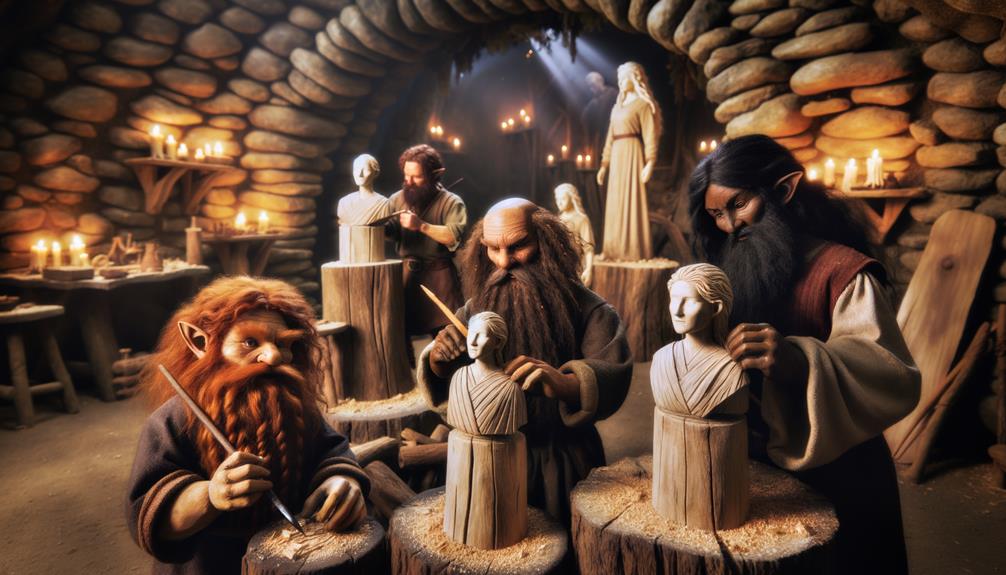In the enchanting world of Norse mythology, the dwarves are revered for their exceptional skills in crafting and their magical prowess. Their talents shine brightly in the creation story of the first humans, Ask and Embla. The story, beautifully told in folklore collections like the Poetic Edda and Prose Edda, highlights the dwarves' unique blend of artistry and elemental harmony. This magical combination gives life to the human world. This fascinating blend of divine magic and earthly skill is a remarkable representation of humanity's roots in Nordic stories. Delving deeper into this relationship, we'll uncover even more exciting aspects of Norse mythology's complex universe.
The Role of Dwarves in Creation
When you take a closer look at Norse mythology, it's clear that the dwarves, famous for their exceptional craft skills and magical prowess, were pretty crucial in the making of humans. They're a symbol of the delicate dance between divine and earthly elements. In the Norse creation story, dwarves are given the credit for creating the first humans, Ask and Embla. These characters feature in both the Poetic and Prose Edda and are represented as the ancestors of all humankind.
This story highlights just how important dwarves were in the grand scheme of Norse cosmology. It also shows how tightly woven together gods, supernatural beings, and mankind were in the belief systems of the Norsemen. Through this, the craftsmanship and magic of the dwarves are seen as symbolic tools for the intricate process of human creation.
Interpretation of Norse Mythology
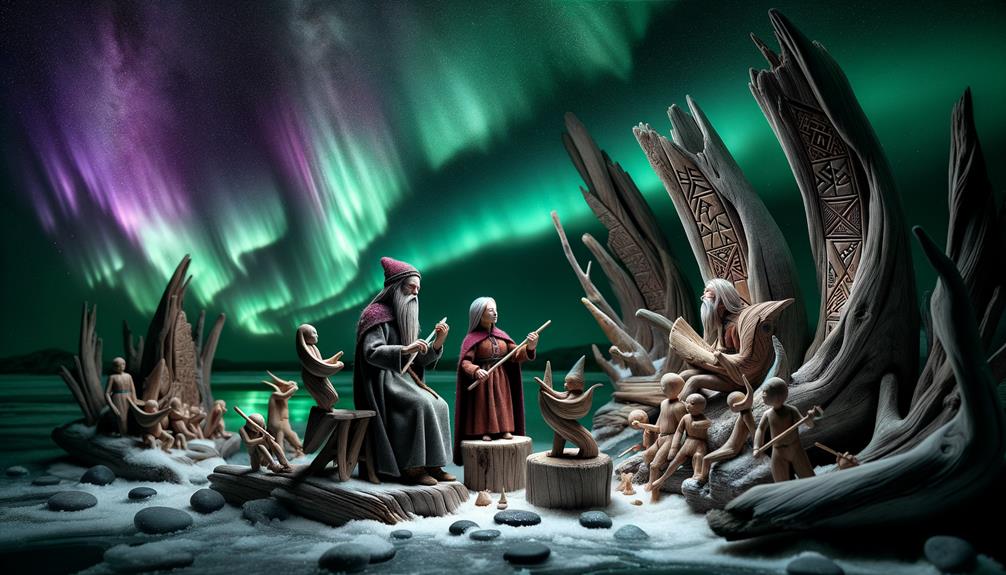
When we step into the world of Norse mythology, we find a deep meaning in the story of how humans were created, especially in the tale of Ask and Embla. The story tells of dwarves, much like god-like artisans, who masterfully blend their skill and divine power to breathe life into the first humans.
The dwarven brothers, embodying the core elements of earth, water, and fire, shape these beings and infuse them with the essence of life. But the story of Ask and Embla isn't just a beginning tale. It's a clear example of how powerful the gods, the poetic mead, and the dwarves' skills are.
This story shows the intricate dance between divine intervention and human life. It gives us a detailed view of how humanity came to be in the universe of Norse mythology.
Ask and Embla's Origin Story
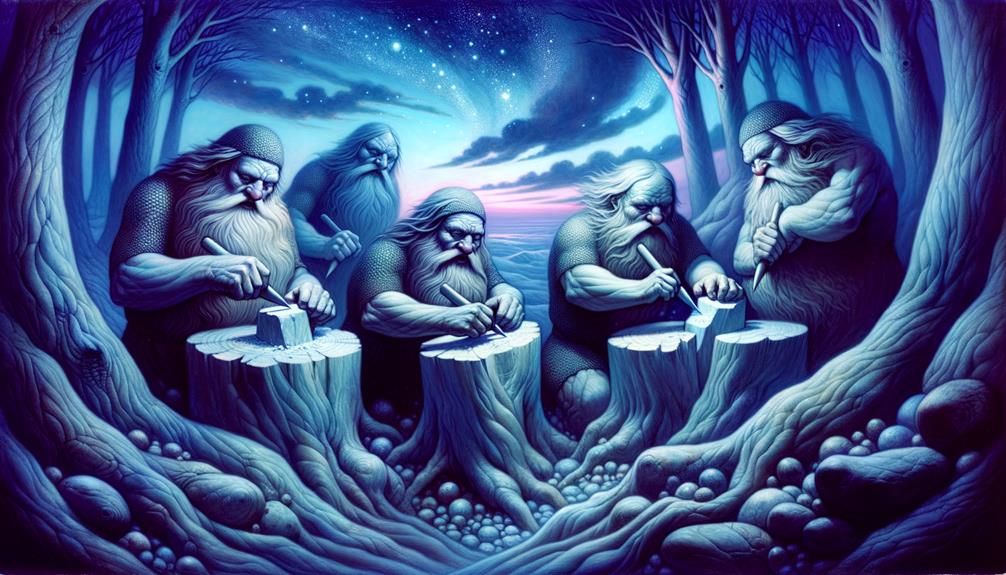
The tale of Ask and Embla is a fascinating one, rooted in the rich lore of Norse mythology. According to the ancient stories, Odin, Vili, and Vé – who were the sons of Bor and powerful gods in their own right – breathed life into two simple trees, turning them into the first man and woman. They imbued these new beings with vitality, wit, and the ability to communicate – the fundamental qualities of humanity.
The names Ask and Embla carry a deep connection to the natural world, which further emphasizes their key role in the Norse understanding of how the world and its inhabitants came to be. This story is meticulously detailed in two important Norse texts, the Poetic Edda and Prose Edda, which underscore the significance of Ask and Embla as the starting point of humankind.
There are theories that draw parallels between the creation account of Ask and Embla and those found in other cultures, showing our shared human quest to understand where we came from. This tale of the first humans, symbolized by Ask and Embla, remains a major element in Norse mythology.
Dwarven Craftsmanship and Creation
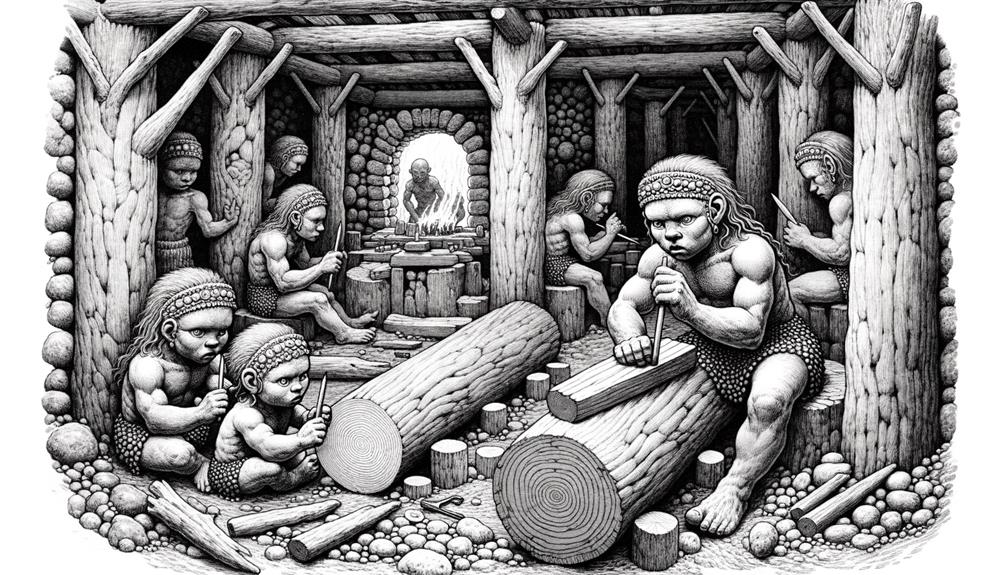
Let's not forget about the dwarves in Norse mythology, right? These guys had some serious skills. Known for their craftsmanship, the dwarves are thought to have had a hand in shaping the world and the folks living in it, which is pretty impressive. They were the original master makers, crafting treasures for gods and humans alike.
Just to give you an idea, here's a quick rundown:
| What they did in Norse Mythology | Their Skills | What they made |
|---|---|---|
| Shaping the world and its inhabitants | They were smiths and artisans | They made treasures for gods and humans |
| They made Ask and Embla, the first humans | They were master craftsmen | They made the first humans |
| They had a big influence on cultural beliefs | They had exceptional skills | They helped shape the landscapes |
| They were a big deal in Norse creation stories | They were linked to the creation of humans | They had a key role in myths |
Isn't that something? Their role wasn't just about crafting objects, they were also shaping stories and landscapes. This makes the dwarves more than just mythical beings, they were key characters in the story of Norse mythology.
Impact on Modern Culture
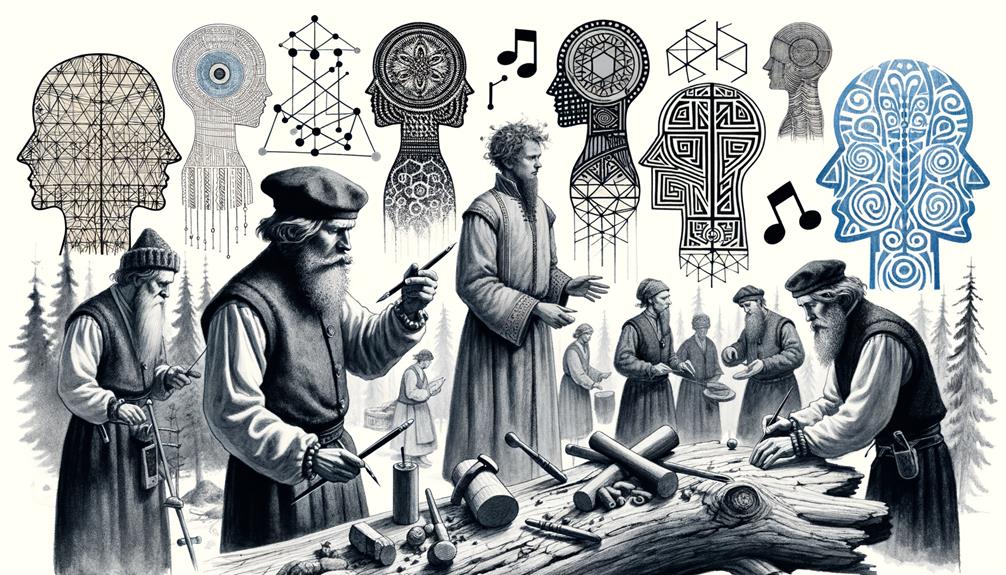
The story of dwarves creating Ask and Embla, the first humans in Norse mythology, is fascinating, isn't it? It's amazing how this ancient tale still echoes in our modern culture. You can see it in all sorts of places, from books to artwork. Isn't it interesting how fantasy authors often use this story as a basis for their own work? They mix the mythical elements with their own ideas about where we come from. This blend of mythology and human origin stories is unique and captivating.
Artists also find inspiration in this dwarven myth. You'll find sculptures and paintings that reflect the creation of Ask and Embla. These works of art are a testament to the enduring appeal of Norse mythology. This tale has become a significant part of our cultural narrative.
It's not just in literature and art, though. This story of dwarves creating the first humans is woven into the very fabric of our identity. It's become a key part of our cultural dialogue, shaping the way we view ourselves and our origins. Isn't it amazing how an ancient myth can still hold such relevance in our modern world?
Frequently Asked Questions
How Were Askr and Embla Created?
It's a bit of a surprise, but in Norse legends, it wasn't the might of dwarves but a touch of the divine that birthed Askr and Embla. This dive into mythology introduces us to a creation tale where mythical creatures mould humanity, a classic theme in ancient storytelling.
What Tree Was Embla Made From?
When it comes to Embla from Nordic mythology, her origins are a bit of a mystery. Some say she was created from an elm tree, while others suggest a vine. There's also a theory that she symbolizes busyness. The emblem of a tree in her story underlines the strong bond between humans and nature in age-old beliefs. It's a fascinating concept, isn't it?
How Did Odin Create the First Man and Woman?
In the captivating tales of Norse mythology, the mighty Odin played a crucial part in making the first man and woman. He did something extraordinary. He took trees and, with some divine magic, turned them into humans. It's an intriguing tale that has shaped many ancient beliefs about how humans came into existence. Isn't that something?
What Is the Story of Voluspa Creation?
The tale of Voluspa's creation is a fascinating one. It starts with Odin and his brothers, who are not dwarves, breathing life into Ask and Embla, the first man and woman. This Norse myth is at the heart of their beliefs about the creation of the world. It carries deep meanings about the universality of creation and the delicate nature of life. This story is beautifully illustrated in the Poetic Edda.

